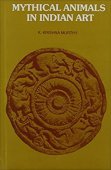Namamala, Nāmamālā, Naman-mala: 8 definitions
Introduction:
Namamala means something in Hinduism, Sanskrit. If you want to know the exact meaning, history, etymology or English translation of this term then check out the descriptions on this page. Add your comment or reference to a book if you want to contribute to this summary article.
In Hinduism
Kosha (encyclopedic lexicons)
Source: Shodhganga: Technical study of the dictionaries published in Sanskrit language since 1800 ADNāmamālā (नाममाला).—This is said to have been written by Dhananjaya (about 1123 A.D.). It contains 205 verses pertaining to synonyms and about 50verses of homonyms. There are a number of reconsions of this work, of which Pramāṇanāmamālā is one, which has three chapters, viz., sabdasankirtiarupana, sabdasankirnaprarupana and sabdavistirnarupana.
Kosha (कोश, kośa) refers to Sanskrit lexicons intended to provide additional information regarding technical terms used in religion, philosophy and the various sciences (shastra). The oldest extant thesaurus (kosha) dates to the 4th century AD.
General definition (in Hinduism)
Source: academia.edu: Tessitori Collection I (hinduism)Nāmamālā (नाममाला) is another name for the Mānamañjarī by Nandadāsa dealing with Lexicography.—The Mānamañjarī is included in the collection of manuscripts at the ‘Vincenzo Joppi’ library, collected by Luigi Pio Tessitori during his visit to Rajasthan between 1914 and 1919.—The Mānamañjarī is a synonymic lexicon in the tradition of the Sanskrit Amarakośa, as stated by the author himself at the outset (see above). [...] The work is also known under other less specific titles such as Nāmamālā, Nāmāvalī, Nāmamañjarī, Nāmamaṇimañjarī.
Languages of India and abroad
Sanskrit dictionary
Source: DDSA: The practical Sanskrit-English dictionaryNāmamālā (नाममाला).—a list of names, glossary (of nouns).
Nāmamālā is a Sanskrit compound consisting of the terms nāman and mālā (माला). See also (synonyms): nāmasaṃgraha.
Source: Cologne Digital Sanskrit Dictionaries: Cappeller Sanskrit-English DictionaryNāmamālā (नाममाला).—[feminine] vocabulary (garland of nouns).
Source: Cologne Digital Sanskrit Dictionaries: Aufrecht Catalogus Catalogorum1) Nāmamālā (नाममाला) as mentioned in Aufrecht’s Catalogus Catalogorum:—an ancient dictionary. Quoted by Kṣīrasvāmin on Amarakośa, by Vāmana Oxf. 207^b, by Hemacandra Oxf. 185^b, by Medinikara.
2) Nāmamālā (नाममाला):—lex. in alphabetical order. Bp. 264.
3) Nāmamālā (नाममाला):—a Prākṛt glossary. Oxf. 351^b.
4) Nāmamālā (नाममाला):—attributed to Daṇḍin. Rādh. 46.
5) Nāmamālā (नाममाला):—a glossary by Dhanaṃjaya (its different appellations are given under that word). Io. 1576. 2841. K. 92. B. 3, 38. 42. Report. Xxii. Ben. 33. Rādh. 10. NW. 614. Oudh. Viii, 8. Np. I, 54. Burnell. 47^a. Gu. 5. P. 10. Bhr. 201. 647. Jac. 696. H. 154. 155. Poona. 249. Taylor. 1, 395. 396. Oppert. Ii, 1087. 3669. Rice. 290 (and sañcu). Peters. 3, 217. 397. Bühler 557. Quoted by Rāyamukuṭa, Bhaṭṭoji Oxf. 162^b, in Asālatiprakāśa Oxf. 194^a.
6) Nāmamālā (नाममाला):—med. by Dhanvantari. Report. Xxxvi. Compare Dhanvantarinighaṇṭu.
7) Nāmamālā (नाममाला):—lex. by Sādhu. Rādh. 10.
8) Nāmamālā (नाममाला):—by Hemacandra. See Abhidhānacintāmaṇi and Deśīnāmamālā.
9) Nāmamālā (नाममाला):—on the reward resulting from repeating the names of Hari and Hara. L. 1255. Oppert. Ii, 6124.
10) Nāmamālā (नाममाला):—stotra, by Yāmunācārya. Gov. Or. Libr. Madras 42.
11) Nāmamālā (नाममाला):—names of Viṣṇu, by Nandadāsa. Oudh. Xx, 236.
—by Haridāsa. ibid.
12) Nāmamālā (नाममाला):—a glossary, by Dhanaṃjaya, often called Dhanamjayanighaṇṭu. Cu. add. 1354. Hz. 379. 625. Gov. Or. Libr. Madras 39. Oudh. Xxi, 60. Rgb. 1145. 1146. Stein 53.
13) Nāmamālā (नाममाला):—by Harshakīrti. See Śāradīyākhyanāmamālā.
14) Nāmamālā (नाममाला):—glossary, by Dhanaṃjaya. Ulwar 1236.
Nāmamālā has the following synonyms: Dhanaṃjayanāmamālā.
15) Nāmamālā (नाममाला):—lex. Bd. 583 (inc.).
—by Dhanaṃjaya. Bd. 574. 575. Peters. 5, 443. 6, 398 (Nighaṇṭusamaya).
16) Nāmamālā (नाममाला):—by Amara. Bc 436. 474.
Nāmamālā has the following synonyms: Nāmamālikā.
Source: Cologne Digital Sanskrit Dictionaries: Monier-Williams Sanskrit-English DictionaryNāmamālā (नाममाला):—[=nāma-mālā] f. Name of sub voce glossaries (also -kośa m. and likā f.)
[Sanskrit to German]
Sanskrit, also spelled संस्कृतम् (saṃskṛtam), is an ancient language of India commonly seen as the grandmother of the Indo-European language family (even English!). Closely allied with Prakrit and Pali, Sanskrit is more exhaustive in both grammar and terms and has the most extensive collection of literature in the world, greatly surpassing its sister-languages Greek and Latin.
See also (Relevant definitions)
Partial matches: Nama, Maala, Mala.
Starts with: Namamala ekakshari, Namamalai, Namamalakosha, Namamalasamgraha.
Ends with (+13): Abhidhanacintamaninamamala, Anekarthanamamala, Deshinamamala, Dhanamjayanamamala, Dvyaksharanamamala, Ekaksharanamamala, Ekarthanamamala, Ganitanamamala, Harinamamala, Matrikanamamala, Oshadhinamamala, Paiyalacchi namamala, Paiyalacchinamamala, Paiyalachchhinamamala, Pancavargasamgrahanamamala, Panchavargasamgrahanamamala, Parasinamamala, Pramananamamala, Rigarthanamamala, Rupamanjari namamala.
Full-text (+38): Urvashinamamala, Namamalika, Dhanamjayanamamala, Deshinamamala, Namamalakosha, Namamalasamgraha, Pariharini, Sheshasamgrahanamamala, Nihsthaman, Nirjhatita, Nishchaya, Shighrabodhini, Deshishabdasamgraha, Pramananamamala, Harinamamala, Nikunita, Parasinamamala, Nirangika, Ganitanamamala, Dvyaksharanamamala.
Relevant text
Search found 3 books and stories containing Namamala, Nāmamālā, Naman-mala, Nāman-mālā, Nama-mala, Nāma-mālā; (plurals include: Namamalas, Nāmamālās, malas, mālās). You can also click to the full overview containing English textual excerpts. Below are direct links for the most relevant articles:
Amarakoshodghatana of Kshirasvamin (study) (by A. Yamuna Devi)
Physical Deformities < [Chapter 3 - Social Aspects]
External Anatomy < [Chapter 3 - Social Aspects]
Post-Amarakośa Lexicographers and Lexicons < [Chapter 1 - Kośa Literature–A Brief Survey]
Chaitanya Bhagavata (by Bhumipati Dāsa)
Verse 1.6.5 < [Chapter 6 - The Lord Begins Studying and His Childhood Mischief]
The backdrop of the Srikanthacarita and the Mankhakosa (by Dhrubajit Sarma)
Related products
